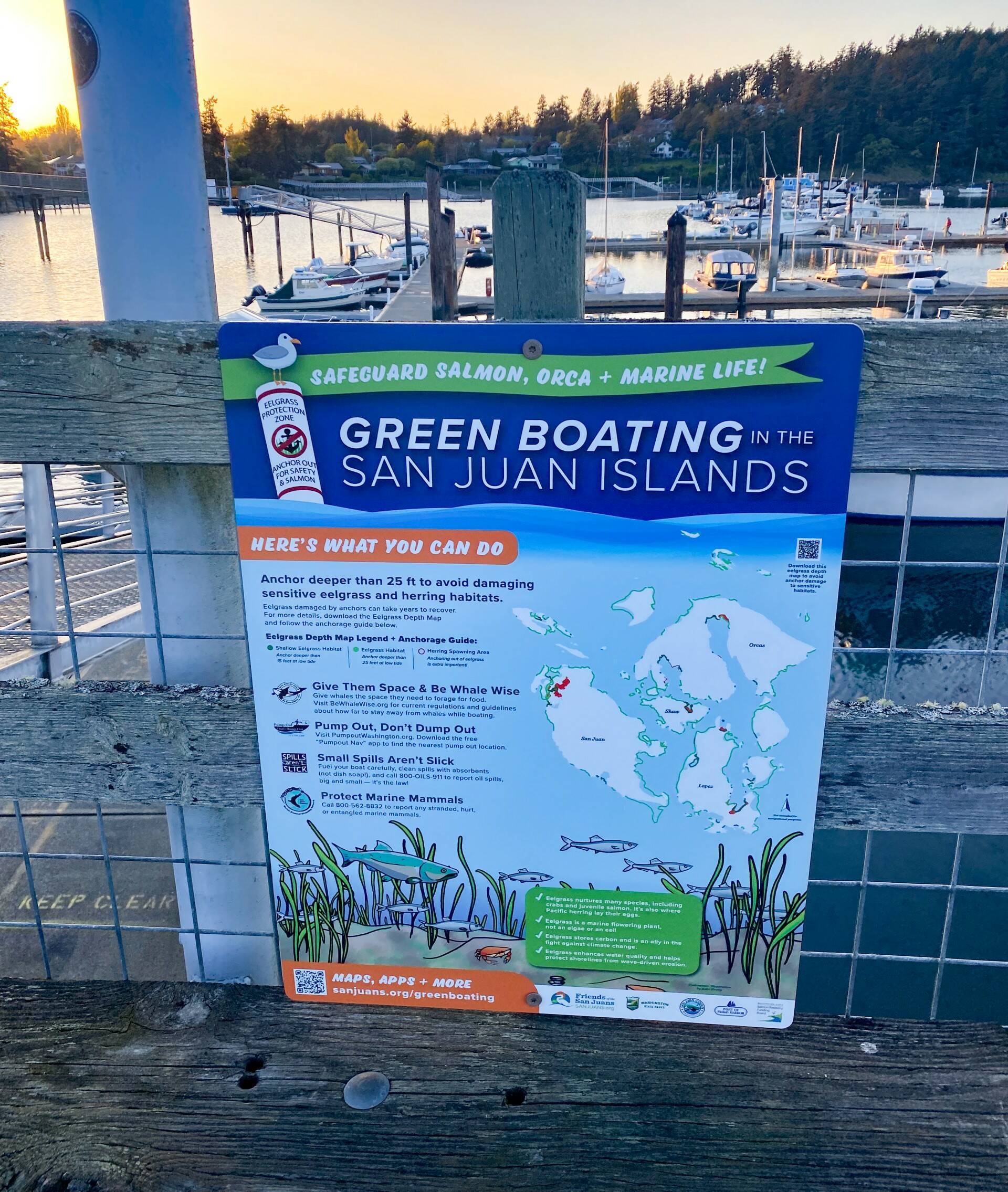Submitted by Friends of the San Juans
Boating season is here, and soon our waters will be buzzing with local and visiting boats. Our amazing group of islands, where boaters find wonder and relaxation, are also where fish and wildlife find food and shelter.
To help our wildlife and boaters thrive during this busy time, Friends of the San Juans is thrilled to announce the launch of our Green Boater program and today we are asking you to become a Green Boater! Visit sanjuans.org/greenboating and take the pledge to anchor out, give whales space, and leave a clean wake this summer to protect orcas and eelgrass. When you sign up, you will receive a free reusable tote bag filled with helpful boating resources including eelgrass depth map placemats; sorbent pads, Be Whale Wise information and a whale warning flag.
Eelgrass, a vital marine habitat in the Salish Sea, supports Dungeness crabs, Chinook salmon, Pacific herring, and ultimately the Southern Resident killer whales. Herring, crucial for marine food webs, spawn on eelgrass habitat in just a few locations in San Juan County that are also popular with boaters including Eastsound and West Sound, Blind Bay, Mud Bay, and Hunter Bay. And for the first time in two decades, evidence of spawning herring was observed in Westcott Bay earlier this spring.
Boaters have an important role to play in protecting marine plants and animals. Eelgrass damaged by boat anchors can take years to recover. While the impact of each individual anchoring event may be small, the combined effect of continual anchoring is significant. One of the easiest ways that you can help salmon and the endangered Southern Resident orcas, is to anchor out in waters deeper than the eelgrass, or if available, use a mooring buoy.
Eelgrass is present at most popular bays in the San Juans, so how can you know where it is safe to anchor to avoid eelgrass? You can use the detailed eelgrass depth data for San Juan County found at sanjuans.org/greenboating. If you do not have access to the map, you can almost always protect eelgrass by dropping the hook at depths greater than 25 feet. Within smaller and shallower bays eelgrass meadows can be easily avoided by anchoring at depths greater than 15 feet. If the waters are clear you can watch underwater to see where the eelgrass is growing.
To make it easier for boaters to be “Green,” Friends has created new educational signs with maps and data on eelgrass and herring habitats, whales, and handy resources for boaters. These signs are being installed at marine parks, docks, and marinas across the islands.
Additional resources are available to restore eelgrass. Thanks to generous grant funding through the National Fish and Wildlife Foundation, Friends of the San Juans can help upgrade mooring buoys and remove unwanted or derelict structures such as old ramps or floats from marine habitats. For more information on the technical and financial assistance available through this voluntary eelgrass restoration program please contact friends@sanjuans.org.
As we embark on this boating season, let’s prioritize preparedness, safety, and responsible stewardship of our marine environments – be a green boater and leave a clean wake! Have fun out there, and let’s ensure these waters remain pristine for generations to come.
Image: Watch for Friends of the Sans out on the dock this summer with Green Boating info and gear! Learn more at sanjuans.org/greenboating.



